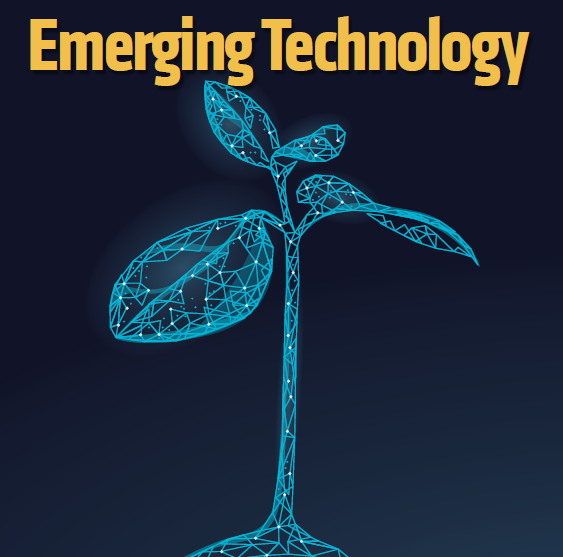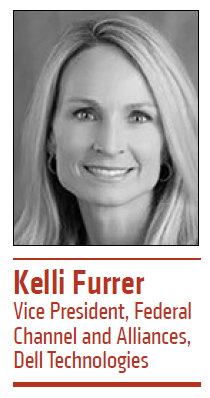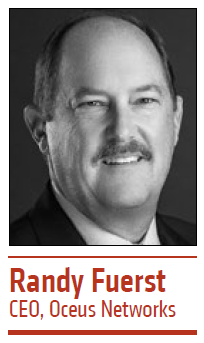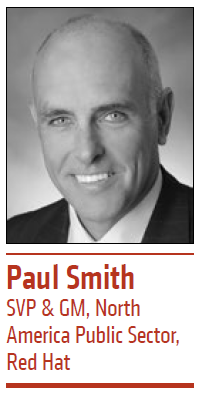
New and emerging technologies—along with digital transformation—come with myriad benefits that the federal government has just begun to adopt. These include blockchain, artificial intelligence, robotic process automation and more. We wanted to hear more about additional emerging technologies that are on the horizon for government and industry, and how those technologies—and the processes in place—will enhance mission success. Read more in our quarterly Sounding Board feature, as PSC board members from Dell Technologies, Oceus Networks, and Red Hat weigh in.

There’s no doubt that emerging technologies, from AI to robotics, are poised to make a huge impact on federal agencies. Possibilities like predicting a veteran’s likelihood of needing a specific type of medical care or anticipating a mail truck’s maintenance requirements are undeniably exciting. However, despite the attention-grabbing use cases and emerging possibilities of these technologies, the advancement likely to make the most significant impact may be one the government has been implementing for years—cloud.
Multi-cloud environments are positioned to support agency missions and prepare organizations to move into the digital future. These environments utilize a combination of cloud types including on-premises, public—and potentially—at the edge. Multi-cloud environments are flexible and can include multiple public cloud vendors, eliminating the potential for vendor lock-in while keeping costs competitive and supporting ongoing innovation.
The federal government is recognizing the value of cloud investments. According to Bloomberg Government, over 1,000 federal projects are considering a move to the cloud in fiscal 2020, with the agencies budgeting a combined $8.7 billion for these projects1. Earlier this year, the federal government issued an updated strategy called Cloud Smart2. The strategy, which is focused on security, procurement, and the workforce, is built on the principle that agencies should access and select IT environments based on their unique needs and goals. It helps establish that cloud—in and of itself—is not an end-goal or a destination, but an operating model designed to help agencies accomplish their missions.
Multi-cloud environments promote success by providing agencies the secure, flexible, and reliable IT infrastructure they need for each individual workload, while also offering the efficiency and affordability associated with cloud environments. As stewards of taxpayer dollars, agencies are responsible for selecting cost-effective IT methods, while at the same time requiring constant accessibility so the mission is never compromised. Security is often a critical concern. It’s important for agencies to retain control over their IT environments and understand how workloads are being treated and secured. All security details, from encryption to access management, are critical elements.
With multi-cloud, each of these considerations can be addressed with the individual workload in mind. Data that is intended for broad citizen use can be stored in a public cloud, while sensitive information still can remain on premises with security tightly controlled. This approach creates an IT environment designed with the mission in mind, and with each workload managed in a manner that optimizes its success.
Today, IT plays a huge role in achieving an agency’s objectives. This includes exploring the newest technologies on the market but will always include IT infrastructure innovation as well. Multi-cloud is undeniably essential for federal mission success.
Kelli is an accomplished federal business leader, marketer and strategist who was Named a Top Woman in Tech for 2018 by FedScoop. In her role as vice president of federal channel and alliances with Dell Technologies, Furrer combines her experience designing and implementing the federal marketing strategy, the launch of a new customer-first Digital Transformation Summit series and account executive to design and deliver mission critical solutions across the federal business. Kelli is an active proponent of diversity in the tech workforce, a wife, mother of three, fly-fisher, runner, dog-lover and business mentor who lives with her family in Georgetown, Texas.

Our reliance today on instant connectivity is truly unprecedented. By 2020, more than 70 percent of Americans1 will own a smartphone, while experts forecast the number of worldwide smartphone users will exceed 2 billion, according to market research firm Statista.
The wireless industry’s growth—recognized by the Trump Administration as one of four “Industries of the Future” that will ensure American prosperity and national security—will be fueled by continued investment in technology, spectrum and applications – all driven by the fifth generation of wireless technology known as 5G.
For consumers, this lightning-speed network will bring self-driving cars, factory automation, remote surgery, smart homes, buildings and cities, precision agriculture and much more. For federal users, 5G will change the landscape of modern conflict and national security. 5G-enabled wireless networks and related applications will be the foundation to ensure federal users and U.S. warfighters have the most sophisticated technology required to protect and defend our nation.
But while the vision for a 5G-connected world is great, two major stumbling blocks stand in the way for commercial and federal users.
Integrating Technologies will be Challenging
Despite all the hype by private sector carriers Verizon, AT&T, Sprint and T-Mobile – and their promise of near-term 5G networks and devices to help boost sales – the reality of ubiquitous rollouts throughout the U.S is several years away. Why? The current generation of wireless, 4G LTE (“Long Term Evolution”), has not yet even reached true 4G specifications in data speed and volume and latency (delay in data transfer).
Complicating the challenge, 5G represents a completely different technology and a huge leap from 4G, with peak speeds up to 20 Gbps and very low latency. These improvements will be isolated to dense urban areas, however.
While this significant technology breakthrough will change the way devices connect to the internet, and more importantly, to each other, we’re simply not there yet. For true 5G’s exciting applications to work for both the commercial and federal sectors, they will need ubiquitous networks. Getting there will take time and money.
Federal Users Will Need More Spectrum to Optimize 5G
With 5G’s ability to enhance decision-making and strategic capabilities from the enterprise network to the tactical edge of the battlefield, rapid deployment is top priority for all interested parties. Time and money are not the only challenges. An even greater one, specifically for the federal sector, is limited spectrum. While some 5G technology will be deployed in the current cellular spectrum and achieve modest performance gains (4G LTE is already well optimized), full 5G development will require significantly more spectrum to provide optimal performance improvement for consumers and the government.
The commercial sector has benefitted greatly from spectrum auctions and leasing from the Federal Communications Commission (FCC), supported by numerous federal spectrum reallocations and relocations. As a result, U.S carriers are well positioned to eventually deploy widescale 5G networks.
Unfortunately, the same cannot be said of spectrum availability for federal use. Current spectrum policy will leave federal operations at the discretion of commercial interests. Access to fallow spectrum-sharing in rural environments doesn’t mean free access. However, access sharing must be part of the fundamental spectrum policy. While commercial needs are extensive, a balance must be created that supports the government’s expanding needs for national defense, public safety, aerospace and other vital missions.
Randy Fuerst is CEO of Oceus Networks, which provides customized broadband products and solutions to government and enterprise customers across the globe with the latest in standards-based commercial technology. The company has been on the forefront of advocating for a framework for innovative spectrum sharing solutions that guarantees federal access to non-federal spectrum.

While emerging technology will always be important, the most important factor will always be the people who use that technology and the processes they implement to achieve mission success.
Recent federal policies like Cloud Smart1 and the Trump Administration’s Executive Order on Maintaining American Leadership in Artificial Intelligence2 underscore the importance of having a skilled set of workers. Indeed, investing in a skilled workforce is one of the three core tenets of Cloud Smart, along with security and procurement. Because while you can have the world’s most innovative technology, you need people to make it work.
Those people may not be the same ones who have worked for decades as government employees or as systems integrators (SIs). Many of these folks may be ready to retire, leading to the much-discussed “silver tsunami.”3 Organizations need systems to extract knowledge from these workers and pass that information to the next generation of government IT administrators.
Agencies can use open source IT automation tools like Ansible4, for example, to preserve their employees’ knowledge before those employees move on. System configurations can be documented in a human- and machine-readable manner, so that when new employees are brought on board, they don’t have to go through the onerous task of manual reconfiguration. It’s a great way to smooth the transition from the old to the new.
Then, there’s the issue of efficiency. No one wants to do rote tasks and worry about their jobs being automated away. Employees want to be able to do meaningful, forward-thinking work that truly makes a difference to their agencies and their country. Automation can make everyone’s lives much easier by reducing the need to focus on time-consuming, everyday tasks.
Things like robotic process automation (RPA)5, for instance, can take over many of the tasks that keep employees from being able to add real value. They don’t have to fill out pages of forms or push emails from inbox to outbox. Automation takes care of that, allowing them to engage in more fulfilling and meaningful tasks.
Open source is already playing a huge role in this effort. A great example is the work that Red Hat is doing with Lockheed Martin6 and its F-22 Raptor fleet. We’ve held Open Innovation Labs to show the company’s development team how to make the jump to agile development using open source software. What used to take five to seven years to get from code to cockpit is now pulled in three years ahead of schedule—and we’re working to get that timeframe down even more.
These technologies present SIs with a great opportunity to use innovation to help both themselves and their government customers. They can use these tools to help agencies become more efficient and agile.
Yet in a way, it’s not the technology that’s the future, but the people who develop and use that technology—both government employees and the SI’s who support them. They’re the ones who are driving innovations and steering agencies toward mission success. 3
Paul Smith brings to Red Hat more than 30 years of experience marketing key technologies to the government marketplace, holding various management positions in the sales of software solutions to government agencies and to systems integrators. As senior vice president and general manager of Public Sector at Red Hat, Smith joined the company in November 2004 and leads the Red Hat government business unit with responsibility for sales, marketing, consulting, channels, and strategic planning. The business unit is responsible for the U.S. federal government worldwide and the U.S. state, local, and education marketplace nationally.
This article was published in the Summer 2019 Service Contractor Magazine. Click here to view a PDF of this article.